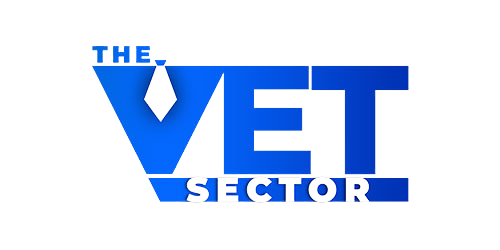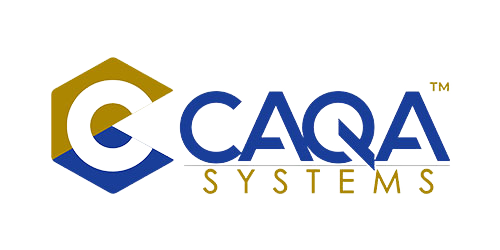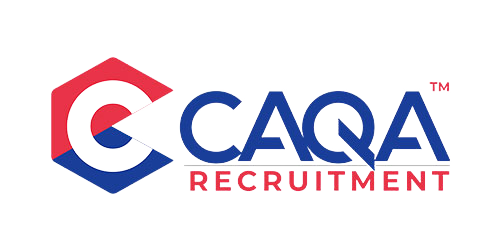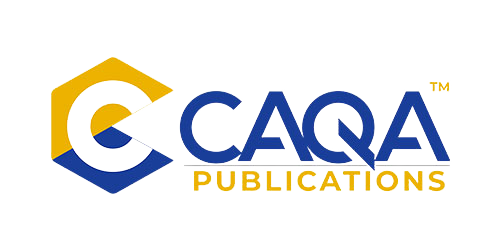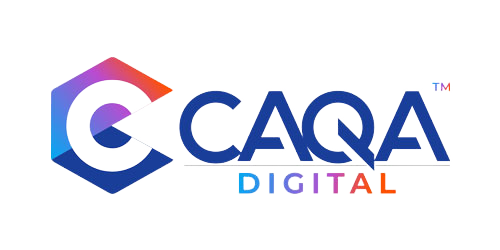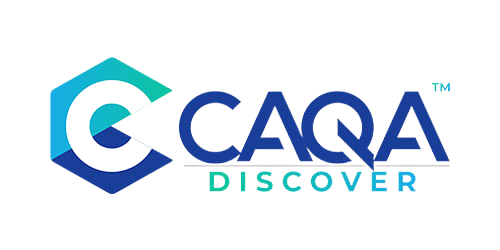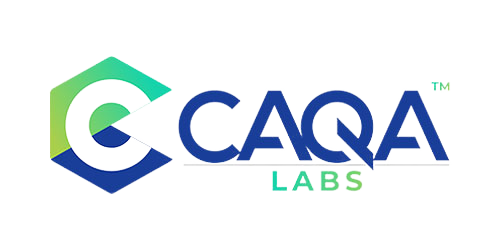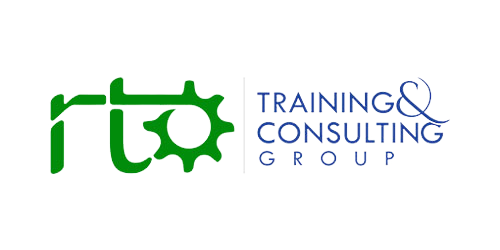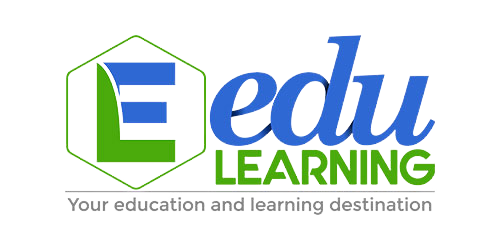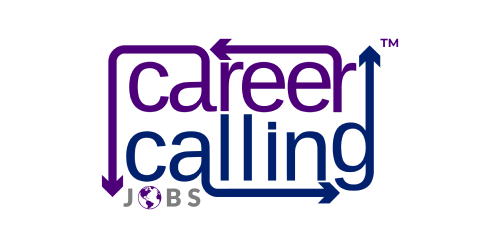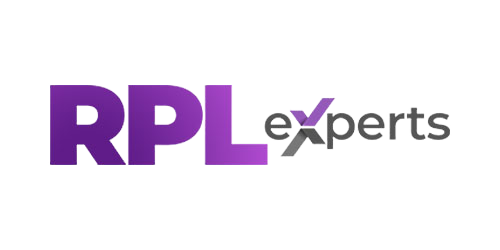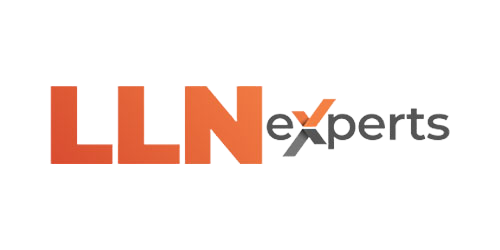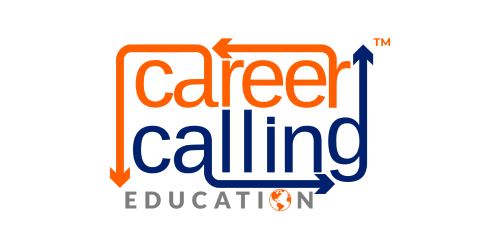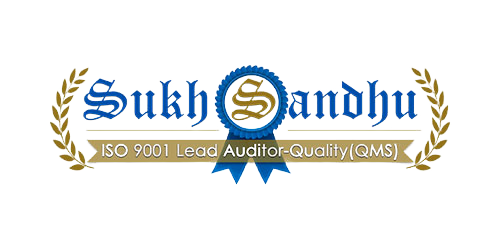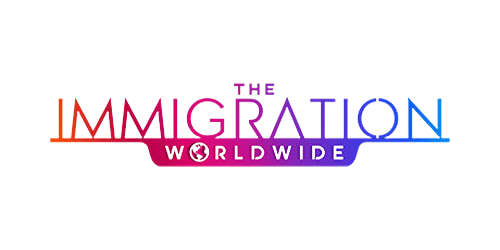BEYOND THE VIRTUAL CLASSROOM: THE SILENT TRANSFORMATION OF VOCATIONAL EDUCATION
A profound digital revolution is sweeping through Australia's Vocational Education and Training (VET) sector, fundamentally reimagining how skills are taught, assessed, and certified. This transformation extends far beyond the superficial adoption of online learning platforms that became necessary during pandemic lockdowns. What's emerging instead is a comprehensive digital ecosystem that is reshaping every aspect of vocational education—from curriculum design and delivery to assessment, compliance, and credentialing.
The statistics tell a compelling story of this accelerating change. Over 80% of Registered Training Organisations (RTOs) now utilise cloud-based Learning Management Systems to deliver training, with leading platforms achieving user satisfaction ratings as high as 4.8 out of 5. Virtual reality simulations have penetrated 45% of trades training programs, improving skill retention by as much as 30% in fields like welding. Perhaps most significantly, artificial intelligence tools are now being deployed to draft learning materials and competency-based assessments, reducing content creation time by a remarkable 50%.
This digital transformation is not occurring in isolation but rather in response to profound challenges facing the VET sector: the need to scale high-quality training to meet critical skills shortages, the imperative to reach learners in remote and regional communities, the pressure to reduce administrative burdens while maintaining rigorous compliance standards, and the demand for more flexible, personalized learning pathways that reflect the diverse needs of modern students and industries.
What makes this moment particularly significant is that technology is no longer merely augmenting traditional approaches but enabling entirely new models of vocational education. Automated assessment systems are freeing trainers to focus on higher-value mentoring. Adaptive learning platforms are creating personalised pathways that respond to individual progress and challenges. Virtual simulations are providing safe, repeatable practice environments for high-risk skills development. Blockchain-based credentials are enhancing the portability and verification of qualifications. Together, these technologies are creating the foundation for a more responsive, accessible, and effective vocational education system.
Yet this digital revolution brings its own challenges. The digital divide threatens to exacerbate inequities, with 25% of low-income learners unable to afford the devices necessary for participation. Data silos persist, with 65% of RTOs struggling with incompatible systems that fragment student information and compliance documentation. Educator readiness remains a concern, as 45% of VET trainers report lacking confidence in using AI and other advanced digital tools. Addressing these challenges requires not just technological solutions but thoughtful policy frameworks, strategic investments, and cultural change within the sector.
THE NEW DIGITAL INFRASTRUCTURE: PLATFORMS AND TOOLS RESHAPING VOCATIONAL EDUCATION
At the foundation of this digital transformation lies a new technological infrastructure that is quietly revolutionising how training is delivered, managed, and experienced. This infrastructure encompasses not just learning platforms but integrated ecosystems of tools for administration, compliance, assessment, and student support, creating the backbone for a more connected, efficient, and responsive VET sector.
Cloud-based Learning Management Systems (LMS) represent the most visible component of this infrastructure, with adoption rates exceeding 80% among RTOs. Leading systems like Cloud Assess (rated 4.8/5 by users) and aXcelerate (3.3/5) have evolved far beyond simple content repositories to become comprehensive learning environments that integrate interactive assessments, compliance management, progress tracking, and mobile-friendly interfaces. The most advanced platforms offer critical features for Australia's diverse learning contexts, such as offline functionality for remote learners without reliable internet access and support for over 500 app integrations to create customised learning ecosystems.
What distinguishes today's digital infrastructure from earlier e-learning approaches is its emphasis on integration and interoperability. The trend toward unified platforms that combine Learning Management Systems with Student Management System features reflects growing recognition that fragmented systems create inefficiencies and compliance risks. Tools like ReadyTech enable cross-platform data sharing through APIs and standards such as xAPI and LTI, allowing real-time compliance checks against training.gov.au and other authoritative sources. This integration is critical in a sector where regulatory compliance is non-negotiable and administrative inefficiencies directly impact educational quality and sustainability.
Automated compliance tools have become essential components of this infrastructure, addressing one of the most resource-intensive aspects of vocational education. Systems like RTOPilot now automate AVETMISS reporting, USI verification, and audit preparation, reducing administrative errors by 60% and fundamentally changing how RTOs approach regulatory requirements. The impact is reflected in audit outcomes, with 95% of RTOs using automated systems passing audits compared to just 70% of those relying on manual processes. This automation doesn't just reduce workload but enhances quality assurance by continuously monitoring compliance rather than treating it as a periodic event.
For practical training, virtual and augmented reality technologies are creating entirely new possibilities for skill development. The adoption of VR simulations in 45% of trades training programs allows learners to practice high-risk scenarios safely and repeatedly, from welding techniques to heavy equipment operation. The pedagogical benefits are substantial, with TAFE NSW reporting 30% improvements in skill retention among welding students using VR simulations. These technologies are particularly valuable in regional and remote areas where access to specialised equipment and facilities may be limited, enabling high-quality practical training without the need for extensive physical infrastructure.
Mobile learning capabilities have become non-negotiable as learners increasingly expect anytime, anywhere access to educational resources. The most successful platforms integrate responsive design, offline functionality, and synchronisation capabilities that accommodate the realities of learning across diverse contexts—from remote worksites to public transport commutes. This mobility is especially critical for apprentices and trainees who need to integrate learning with workplace experiences and for regional learners who may travel significant distances for face-to-face components of blended programs.
AI'S GROWING INFLUENCE: FROM CONTENT CREATION TO PERSONALISED LEARNING
Artificial intelligence is rapidly emerging as perhaps the most transformative force in vocational education, moving beyond simple automation to fundamentally reshape how content is created, how assessment occurs, and how learning pathways are structured. While still evolving, AI applications in the VET sector are already demonstrating significant impacts on educational quality, efficiency, and personalisation.
In curriculum development and resource creation, AI tools like ChatGPT are being deployed to draft learning materials and competency-based assessments, reducing content creation time by 50%. This represents a profound shift in how educational resources are developed, allowing subject matter experts to focus on refinement and contextualization rather than starting from scratch with each new program or qualification. Importantly, most RTOs are not simply deploying AI-generated content uncritically—78% validate this content against industry standards to ensure accuracy and relevance, creating human-AI collaborative workflows rather than fully automated processes.
Assessment is another area experiencing AI-driven transformation. Automated grading systems now assess multiple-choice quizzes and scenario-based tasks instantly, with platforms like Cloudemy's LMS auto-grading 40% of assessments in hospitality and business courses. This automation frees trainers to focus on more complex evaluations requiring professional judgment while providing learners with immediate feedback that accelerates the learning cycle. Significantly, regulatory authorities have recognised both the potential and limitations of these systems, with ASQA mandating human oversight for AI assessments to ensure compliance with the Standards for RTOs 2015.
Perhaps most transformative is AI's role in creating personalised learning pathways. Adaptive platforms like Ready Skills analyse individual performance to recommend tailored resources and activities, responding to each learner's pace, preferences, and challenges. The impact on educational outcomes is substantial, with personalised approaches boosting completion rates by 20%. This adaptivity represents a fundamental shift from the one-size-fits-all approach that has characterised much of traditional vocational education, creating more equitable opportunities for success among diverse learner populations.
In student support, AI-powered chatbots and virtual assistants are providing immediate responses to common questions and guiding learners through administrative processes, reducing wait times and friction points that can impede progress. More sophisticated systems simulate workplace interactions for fields like aged care, allowing trainees to practice communication skills and decision-making in realistic but consequence-free environments. These applications are particularly valuable for learners in remote areas who may have limited access to in-person support services.
The application of generative AI is extending to new frontiers, with platforms like Digital Robot creating tailored digital readiness questionnaires that assess learners' access to devices and internet connectivity before enrollment. This proactive approach helps identify potential barriers to participation early, enabling providers to implement appropriate supports or alternatives. Similar applications generate adaptive remediation resources when knowledge gaps are identified, creating a more responsive and supportive learning environment.
Despite these advances, challenges remain in AI implementation. Quality concerns persist, with 62% of RTOs reporting that AI-generated content sometimes lacks contextual relevance or industry specificity. Ethical questions about transparency, bias, and appropriate usage continue to evolve faster than regulatory frameworks, with 68% of RTOs uncertain about how to properly document AI use in assessments. As the technology continues to mature, finding the right balance between automation and human expertise remains a critical consideration for maintaining educational quality and integrity.
BRIDGING THE DIVIDE: TECHNOLOGY FOR EQUITY AND ACCESSIBILITY
While digital transformation offers tremendous potential to enhance vocational education, it also risks exacerbating existing inequities if not implemented with careful attention to accessibility and inclusion. Addressing the digital divide has become a critical priority for the VET sector, with providers developing innovative approaches to ensure technology enhances rather than limits educational opportunity.
Geographic disparities represent one of the most significant equity challenges in Australian vocational education. Technology is increasingly being leveraged to bridge these gaps, with 55% of regional RTOs now utilising hybrid delivery models that combine online theory with concentrated face-to-face practical blocks, compared to just 35% before the pandemic. This blended approach minimises the travel burden for remote learners while maintaining the hands-on components essential for quality vocational training. Programs like the Drones in Schools Project take this further by connecting remote students with industry mentors via video conferencing, creating virtual work placements that would be logistically impossible through traditional means.
However, infrastructure limitations remain a significant barrier, with 40% of remote learners lacking reliable internet access. Responsive providers are adapting to these constraints through offline LMS features, such as Cloud Assess's mobile app that allows content download and completion without continuous connectivity. Some RTOs are addressing hardware limitations by implementing device loan programs or developing low-bandwidth versions of learning materials that function effectively even with intermittent connectivity. These adaptations reflect growing recognition that digital solutions must be designed with infrastructure realities in mind to avoid inadvertently excluding vulnerable learners.
Socioeconomic barriers intersect with geographic challenges, as 25% of low-income learners cannot afford the devices necessary for full participation in digital learning. This digital poverty threatens to reinforce existing patterns of educational disadvantage unless directly addressed through policy and program design. Forward-thinking providers are responding with initiatives ranging from subsidised device programs to on-campus technology hubs that provide access to computers, high-speed internet, and technical support. Some are partnering with community organisations and libraries to create networks of access points beyond traditional campuses.
Cultural considerations also influence technology adoption and effectiveness, particularly for Indigenous learners in remote communities who often prefer relationship-based, hands-on mentoring over purely digital delivery. Respectful integration of technology requires understanding these preferences and developing approaches that complement rather than replace valued cultural learning practices. Successful programs often incorporate digital tools within community-based delivery models, using technology to enhance rather than supplant face-to-face interactions and cultural knowledge transmission.
For learners with disabilities, digital transformation offers both new opportunities and potential barriers. Assistive technologies and universal design principles can make learning more accessible for many—screen readers, captioning, and adaptive interfaces remove barriers for learners with sensory or physical impairments. However, these accessibility features must be intentionally incorporated rather than treated as optional add-ons. Leading RTOs are adopting accessibility standards for all digital content and platforms, ensuring that technological innovation enhances rather than limits participation for learners with diverse needs.
Addressing these multifaceted equity challenges requires not just technological solutions but comprehensive strategies that consider the social, economic, and cultural dimensions of access. The most effective approaches combine technology with targeted support services, flexible delivery options, and inclusive design principles that recognise and respond to the diverse circumstances of learners. As one RTO leader noted, "Technology is only as inclusive as we design it to be—we need to consider who might be left behind with every digital innovation we implement."
DATA INTEGRATION AND INTEROPERABILITY: OVERCOMING THE SILO CHALLENGE
One of the most persistent challenges in the digital transformation of vocational education is the fragmentation of data across incompatible systems and platforms. This fragmentation creates inefficiencies, compliance risks, and barriers to effective decision-making—issues that are becoming increasingly urgent as the volume and complexity of data in the sector continue to grow.
The scale of the challenge is substantial, with 65% of RTOs reporting struggles with incompatible Learning Management Systems, Student Management Systems, and HR platforms that necessitate duplicated data entry and manual reconciliation processes. Only 30% of providers have achieved direct integration between their LMS and AVETMISS reporting systems, despite the critical importance of this data for both compliance and funding. These disconnects not only increase administrative overhead but also create opportunities for errors that can have significant regulatory and financial consequences.
The barriers to integration are multifaceted. Legacy systems with limited interoperability capabilities remain common, particularly among smaller providers with constrained IT resources. Proprietary data formats and inconsistent terminology across platforms create technical obstacles to seamless information flow. Privacy concerns and data governance requirements add further complexity, particularly when integration involves sensitive student information or assessment outcomes. Perhaps most fundamentally, the rapid pace of technological change means integration solutions quickly become outdated as new platforms and requirements emerge.
Despite these challenges, promising approaches to data integration are gaining traction. Centralised data platforms like Digital Robot are creating unified student digital capability profiles that align with the Australian Digital Capability Framework, bringing together previously disconnected information about skills, assessment outcomes, and training needs. API-driven integration frameworks enable real-time data sharing between systems without requiring complete platform replacement, allowing providers to preserve investments in existing technologies while enhancing connectivity. The adoption of standards like xAPI and LTI is fostering greater interoperability by establishing common frameworks for data exchange across platforms.
The benefits of successful integration extend beyond administrative efficiency to impact educational quality and student experience. When learning analytics are integrated with student support systems, at-risk learners can be identified earlier and provided with timely interventions. When assessment data flows seamlessly to credentialing systems, qualification issuance becomes faster and more accurate. When enrollment information automatically updates across platforms, learners experience fewer administrative hurdles and more streamlined pathways. These improvements in the learner journey directly contribute to better retention, completion, and satisfaction outcomes.
For compliance and reporting purposes, integrated data systems offer particularly significant advantages. RTOs using integrated platforms report substantial reductions in the time and resources required for AVETMISS reporting, audit preparation, and ongoing compliance monitoring. Real-time integration with training.gov.au for compliance checks ensures training packages and qualifications remain current, reducing the risk of delivering outdated content. Automated validation of assessment tools against training package requirements helps maintain alignment between delivery, assessment, and compliance expectations—a critical factor in audit outcomes.
Looking forward, the evolution toward data ecosystems rather than siloed platforms represents the next frontier in addressing these integration challenges. Rather than forcing all functions into a single monolithic system, this approach emphasises creating secure, standardised methods for information exchange between specialised platforms that excel in their specific domains. This ecosystem model enables providers to select best-of-breed solutions for different functions while maintaining data coherence across the organisation—a more flexible and sustainable approach to the complex data needs of modern vocational education.
REGULATORY TECHNOLOGY: AUTOMATING COMPLIANCE FOR QUALITY AND EFFICIENCY
In a sector as heavily regulated as vocational education, compliance management represents one of the most resource-intensive operational areas for providers. The emergence of Regulatory Technology (RegTech) is fundamentally changing this landscape, using automation, artificial intelligence, and data analytics to transform compliance from a manual burden to a largely automated function integrated into daily operations.
The impact of RegTech adoption is reflected in striking performance differentials: 95% of RTOs using automated compliance systems successfully pass audits, compared to just 70% of those relying on manual processes. Tools like RTOPilot and Cloudemy have moved beyond simple documentation management to create intelligent systems that actively monitor compliance status, flag potential issues before they become problems, and automate complex reporting requirements. These solutions reduce administrative errors by up to 60%, freeing staff resources for educational rather than paperwork functions.
AVETMISS reporting, a persistent pain point for many providers, has been particularly transformed by automation. Leading tools now validate data fields in real-time, reducing reporting errors by 90% and eliminating the frantic end-of-period reconciliation efforts that many RTOs historically experienced. Instead of treating compliance as a periodic event, these systems enable continuous monitoring that identifies and addresses issues as they arise, fundamentally changing the compliance culture from reactive to proactive.
Assessment validation—a critical quality assurance process—has similarly benefited from technological innovation. AI-powered systems now analyse assessment tools against training package requirements to ensure complete coverage of required performance criteria and knowledge evidence. When gaps or misalignments are identified, these systems flag the issues before assessments are finalised, enabling corrections before non-compliant tools are deployed. This preventative approach reduces the risk of systematic compliance failures that can affect entire cohorts of students.
The benefits of RegTech extend beyond administrative efficiency to enhance educational quality. By automating routine compliance tasks, these systems allow trainers and assessors to focus more on student interaction and skills development rather than paperwork. Real-time compliance checking ensures training materials and assessment tools remain aligned with current training package requirements, reducing the risk of outdated content being delivered to learners. Automated monitoring of student progress enables earlier identification of at-risk learners who may need additional support to succeed.
For students, the improvements in background compliance processes translate to tangible benefits: faster qualification issuance, more consistent assessment practices, and greater confidence in the regulatory standing of their provider. When compliance processes operate smoothly in the background, the entire student experience improves, from enrollment through to certification and employment outcomes.
Despite these advances, challenges remain in RegTech implementation. ASQA has yet to finalise specific guidelines for AI use in compliance processes, leaving 68% of RTOs uncertain about how to properly document their use of these technologies in audit contexts. Questions about the appropriate balance between automation and human oversight continue to evolve, particularly for high-stakes decisions that affect student outcomes or provider registration. As with other technological innovations, ensuring that automated systems enhance rather than replace professional judgment remains a critical consideration.
Looking forward, the integration of RegTech with broader data ecosystems represents the next evolution in compliance automation. When compliance systems connect seamlessly with learning platforms, student management systems, and industry engagement tools, providers can create truly integrated quality assurance frameworks that enhance both efficiency and educational outcomes. This connected approach transforms compliance from a separate administrative function to an embedded aspect of effective educational delivery—a shift that benefits providers, regulators, and most importantly, learners themselves.
IMMERSIVE TECHNOLOGIES: BRINGING PRACTICAL SKILLS INTO THE DIGITAL REALM
Perhaps no area of vocational education has been more resistant to digitisation than hands-on, practical skills training—the very heart of the VET sector's approach to workforce preparation. Yet immersive technologies like Virtual Reality (VR), Augmented Reality (AR), and advanced simulations are now bridging the gap between digital and physical learning environments, creating new possibilities for safe, efficient, and effective practical training.
The penetration of these technologies is already substantial, with VR simulations now used in 45% of trades training programs to replicate high-risk scenarios safely. TAFE NSW's application of VR to welding training illustrates the potential, with students showing 30% improvements in skill retention compared to traditional methods alone. These immersive environments allow learners to practice complex technical skills repeatedly without material costs, equipment constraints, or safety risks, addressing persistent challenges in scaling high-quality practical training.
What makes these technologies particularly valuable for vocational education is their ability to recreate workplace contexts that would be difficult or impossible to provide in traditional training settings. Construction students can experience working at heights without physical risk. Healthcare trainees can practice emergency procedures that occur too rarely for consistent real-world exposure. Manufacturing apprentices can interact with expensive equipment that would be impractical to provide for individual practice. These contextual learning experiences enhance the transfer of skills from training to workplace application—a critical success factor for vocational outcomes.
The pedagogical benefits extend beyond mere practice opportunities. Immersive technologies enable progressive skill development through carefully calibrated challenges that adapt to learner progress. They provide immediate feedback on performance, helping learners identify and correct errors in real-time rather than developing incorrect habits. They allow instructors to demonstrate techniques from perspectives impossible in physical demonstrations, such as showing welding processes from the inside of a joint. These enhanced learning experiences often lead to faster skill acquisition and greater confidence in applying abilities in workplace contexts.
Regional and remote communities particularly benefit from these innovations, as immersive technologies can bring specialised training experiences to areas where physical access to equipment or facilities would be impractical. Programs like the Drones in Schools Project use these technologies to connect remote students with industry mentors, creating virtual work placements that overcome geographic barriers to industry exposure. While not replacing the need for some hands-on components, these approaches significantly reduce the travel burden for regional learners while maintaining educational quality.
However, challenges remain in scaling these immersive learning approaches. Hardware costs can be substantial, with high-quality VR systems representing a significant investment for providers and potentially creating access barriers for disadvantaged learners. Content development for immersive environments requires specialised skills that many training developers do not yet possess, leading to limited availability of high-quality resources aligned with specific training package requirements. Technical support needs increase substantially with these more complex systems, creating operational challenges, particularly for smaller providers with limited IT resources.
Despite these barriers, the trajectory toward greater integration of immersive technologies in vocational education is clear. Costs continue to decrease as technologies mature, making implementation more feasible for a wider range of providers. Content development platforms are becoming more accessible, allowing subject matter experts to create immersive experiences without extensive technical expertise. Shared resource models are emerging, with industry bodies and government initiatives supporting the development of immersive training content that can be utilised across multiple providers.
The future likely involves not replacement but integration—immersive technologies complementing rather than substituting for physical hands-on learning. The most effective approaches combine virtual practice with targeted physical experience, using digital immersion to build foundational skills and confidence before transitioning to real-world application. This blended approach maximises the advantages of both modes while addressing the limitations of each, creating more efficient and effective pathways to practical competence.
WORKFORCE READINESS: PREPARING EDUCATORS FOR THE DIGITAL FUTURE
As technological tools transform vocational education, the readiness of the VET workforce to effectively implement and leverage these innovations has emerged as a critical factor in successful digital transformation. The statistics highlight the challenge: 45% of VET educators report lacking confidence in using AI tools, and 30% of RTOs cite staff reluctance as a significant barrier to adopting new technologies. Addressing this capability gap is essential for realising the full potential of digital innovation in the sector.
The nature of this challenge extends beyond basic digital literacy to encompass a range of more sophisticated capabilities. Educators need not just operational skills to use new platforms but pedagogical understanding of how to integrate these tools effectively into teaching and assessment practices. They require critical evaluation abilities to assess the quality and appropriateness of AI-generated content for their specific contexts. They need data literacy to interpret learning analytics and use these insights to inform instructional decisions. They must develop facilitation skills for blended and online environments that differ significantly from traditional classroom approaches.
The rapid pace of technological change compounds these challenges, creating a moving target for professional development efforts. Technologies that seemed cutting-edge just a few years ago are now considered basic, while entirely new capabilities like generative AI have emerged with minimal warning. This acceleration means that one-time training interventions quickly become outdated, requiring instead a cultural shift toward continuous professional learning and adaptation as a core aspect of the educator role.
Effective approaches to building workforce capability are emerging across the sector. Peer learning communities enable educators to share experiences and strategies, creating collaborative support networks that reduce isolation and build collective expertise. Micro-credentials focused on specific digital pedagogies or tools provide targeted, just-in-time professional development that educators can apply immediately in their practice. Mentoring programs pair digitally confident educators with those still developing their capabilities, providing personalised support and guidance through implementation challenges.
Industry partnerships play a particularly important role in workforce development, keeping vocational educators connected to evolving workplace technologies and practices. Initiatives that enable trainers to spend time in industry settings experiencing how digital tools are used in workplace contexts help ensure that educational approaches remain relevant to employment outcomes. Similarly, bringing industry professionals into educational settings to demonstrate the application of emerging technologies creates authentic connections between training and workplace reality.
Institutional leadership and culture significantly influence workforce readiness for digital transformation. Organisations that create safe spaces for experimentation and learning, recognise and reward innovation, and provide adequate time and resources for professional development, see much higher rates of successful technology adoption. Conversely, environments where digital initiatives are imposed without adequate support or where failure is penalised tend to encounter greater resistance and less effective implementation.
Looking forward, the VET sector must move beyond viewing digital capability as a specialised skill set for select educators to recognising it as a core competency for all vocational trainers and assessors. This mainstream integration requires updating qualification requirements, professional standards, and regulatory expectations to reflect the technological realities of contemporary educational practice. The proposed National AI Capability Plan, aiming to train 500,000 workers in AI literacy by 2030, with VET delivering 60% of programs, represents a step in this direction, though sustained and comprehensive approaches will be necessary to address the full scope of workforce development needs.
The most successful workforce development strategies recognise that technological change involves not just skill acquisition but identity evolution. Many vocational educators entered the profession based on their industry expertise and hands-on teaching abilities, making the shift to digital facilitation a significant professional identity transition. Supporting this transition requires attending to both the technical and psychological aspects of change, creating pathways that honour existing expertise while building new capabilities for a digitally-enhanced educational future.
FUTURE HORIZONS: EMERGING TECHNOLOGIES AND STRATEGIC DIRECTIONS
As the VET sector navigates current digital transformation challenges, emerging technologies and strategic trends are already shaping the next wave of innovation. Understanding these future horizons is essential for providers seeking not just to respond to present realities but to position themselves advantageously for the continuing evolution of vocational education and training.
Generative AI represents perhaps the most immediate frontier, with applications extending well beyond current content creation and assessment tools. Advanced AI systems are beginning to generate contextualised learning scenarios that adapt in real-time to student responses, creating dynamic simulations for fields from healthcare to customer service. These systems enable the practice of complex interpersonal and decision-making skills that have traditionally been difficult to develop outside workplace contexts. As these capabilities mature, the boundary between simulation and authentic experience will continue to blur, creating new possibilities for developing and assessing the "soft skills" increasingly valued by employers alongside technical competencies.
Blockchain-based credentialing is gaining momentum as a solution to persistent challenges in qualification verification and portability. TAFE Queensland's pilot of blockchain-based digital badges for short courses demonstrates how this technology enables instant employer verification while giving learners greater control over their credential information. Beyond simple verification, blockchain enables more sophisticated credential models like stackable micro-qualifications that can be combined in various configurations to demonstrate specific skill sets. These granular approaches to credentialing align well with the increasing modularity of career pathways and the growing emphasis on continuous professional development throughout working lives.
Advanced data analytics and learning intelligence systems represent another significant frontier, using sophisticated algorithms to identify patterns in learning behaviours that can inform both individual guidance and system-level improvements. These capabilities extend beyond current learning analytics to create predictive models that identify potential challenges before they manifest as educational difficulties. For example, early interaction patterns might signal engagement issues that could lead to later non-completion, enabling proactive interventions that improve retention outcomes. At the system level, these analytics can identify qualification components that consistently challenge learners, suggesting potential improvements in curriculum design or delivery approaches.
The integration of Internet of Things (IoT) technologies with vocational training creates new possibilities for connecting physical equipment with digital learning environments. Smart tools that track usage patterns and provide real-time feedback on technique, connected workspaces that simulate workplace monitoring systems, and remote access to physical equipment for distance learners all represent emerging applications at the intersection of IoT and vocational education. These technologies are particularly relevant for trades and technical training, where physical manipulation and equipment operation remain central to skill development.
Strategic priorities for the sector reflect these technological trajectories while addressing persistent challenges in current digital transformation efforts. The Jobs and Skills Australia (JSA) advocacy for unified data frameworks directly addresses the interoperability challenges that continue to hamper effective data utilisation across the sector. Similarly, the National AI Capability Plan's goal of training 500,000 workers in AI literacy by 2030, with VET delivering 60% of programs, acknowledges both the workforce development needs created by these technologies and the sector's critical role in addressing them.
For individual providers, strategic recommendations focus on integrating technological innovation with proven educational approaches rather than pursuing technology for its own sake. Blended learning models that combine AI-driven content with hands-on workshops for disadvantaged cohorts recognise that digital transformation must enhance rather than replace the human elements that remain essential to effective vocational education. Partnerships with industry to co-design AI tools ensure that technological innovation remains grounded in workplace relevance rather than becoming disconnected from employment outcomes. Investments in cybersecurity acknowledge the increasing value and sensitivity of the data these systems manage, protecting both institutional operations and student privacy.
Perhaps most fundamentally, successful navigation of these future horizons requires shifting from viewing digital transformation as a separate initiative to recognising it as an integral aspect of educational strategy and quality. The providers best positioned for future success are those integrating technological considerations into every aspect of their operations—from program design and delivery to student support, compliance management, and industry engagement. This integrated approach treats digital capabilities not as add-ons but as core competencies essential to fulfilling the sector's mission of developing skilled workers for an increasingly digital economy.
CONCLUSION: NAVIGATING THE DIGITAL CROSSROADS
Australia's VET sector stands at a pivotal digital crossroads, facing both unprecedented opportunities and significant challenges as technology continues to transform educational possibilities. The digital revolution documented throughout this analysis is not merely changing how training is delivered but fundamentally reimagining what vocational education can achieve—greater accessibility, enhanced personalisation, improved efficiency, and closer alignment with rapidly evolving workplace requirements.
The statistics and trends examined reveal a sector in active transition: 80% of RTOs using cloud-based learning management systems, 45% of trades training programs incorporating virtual reality simulations, AI tools reducing content creation time by 50%, and automated compliance systems improving audit success rates from 70% to 95%. These figures represent not just technological adoption but the emergence of new capabilities that directly address persistent challenges in vocational education, from geographic access barriers to the resource-intensive nature of practical skills training and compliance management.
Yet significant barriers to full digital transformation remain. The digital divide threatens to exacerbate existing inequities, with 25% of low-income learners unable to afford necessary devices and 40% of remote learners lacking reliable internet access. Data silos persist, with 65% of RTOs struggling with incompatible systems that fragment information and complicate operations. Workforce readiness represents another critical challenge, as 45% of VET educators report lacking confidence with AI tools, and cultural resistance continues to slow adoption in some contexts. Regulatory uncertainty further complicates the landscape, particularly regarding emerging technologies like AI, where clear guidelines have yet to be established.
Strategic priorities for the sector must address these barriers while leveraging emerging opportunities. Interoperability standards advocated by Jobs and Skills Australia offer potential solutions to persistent data fragmentation, creating unified frameworks that enable seamless information flow across systems. The National AI Capability Plan's focus on building AI literacy among both educators and learners acknowledges the growing importance of these technologies in both educational and workplace contexts. Blended approaches that combine technological innovation with hands-on learning and human connection recognise that effective vocational education requires integration rather than replacement of traditional strengths.
For individual providers, successful navigation of this digital crossroads requires balancing innovation with equity, efficiency with quality, and technological capability with human connection. Adopting blended learning approaches that leverage AI-driven content while providing targeted face-to-face support for disadvantaged cohorts creates more accessible pathways without sacrificing educational effectiveness. Investing in cybersecurity protects increasingly valuable data assets while maintaining student trust. Partnering with industry to co-design digital tools ensures technological innovation remains grounded in workplace relevance rather than becoming disconnected from employment outcomes.
Perhaps most fundamentally, the VET sector must recognise that digital transformation is not a destination but a continuing journey of adaptation and evolution. The technologies examined throughout this analysis—from learning management systems and virtual reality to artificial intelligence and blockchain—represent not endpoint solutions but capabilities that will themselves continue to evolve and combine in new ways. Success requires not just implementing today's technologies but building the adaptive capacity to continuously integrate emerging innovations into effective educational practice.
The ultimate measure of success in this digital transformation will not be technological sophistication but educational and employment outcomes. Do these innovations make quality vocational education more accessible to disadvantaged and remote learners? Do they enable more efficient development of the skills needed in rapidly evolving workplaces? Do they create more personalised and engaging learning experiences that improve retention and completion? Do they produce graduates with both the technical abilities and adaptive capacity needed for success in an increasingly digital economy? These questions must remain at the centre of strategic decision-making as the sector continues its digital evolution.
Australia's VET sector has demonstrated remarkable resilience and innovation in navigating the initial phases of digital transformation. The challenge and opportunity ahead lie in building on this foundation to create a truly inclusive, responsive, and future-ready vocational education system that leverages technology not as an end in itself but as a powerful means to fulfill the sector's essential mission: developing the skilled workforce that drives Australia's economic prosperity and social wellbeing.








